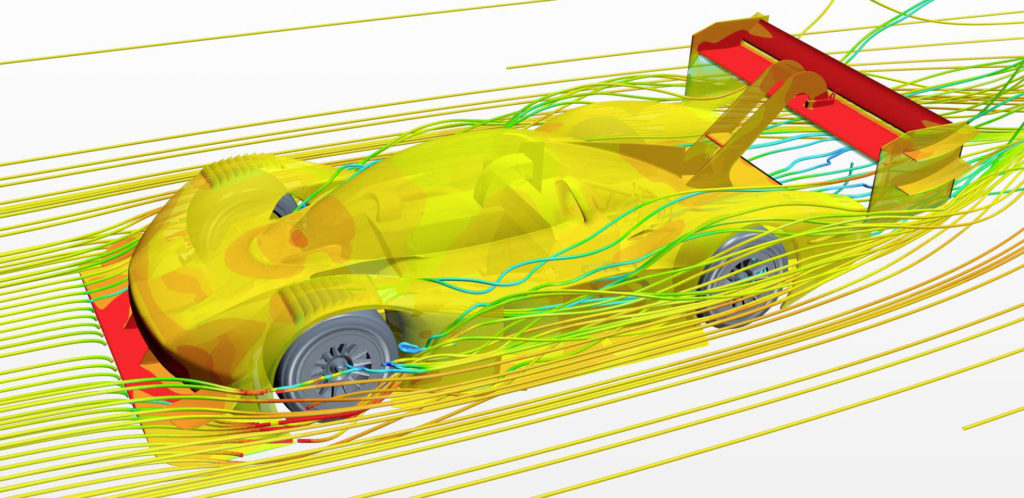Volkswagen Motorsport has revealed the extent to which CAE helped it overcome the limitations of testing on its climb up the Pikes Peak in Colorado in June.
Test drives up the hill are so heavily restricted that before driver Romain Dumas reached the 4,302m summit in a new record time, he had been unable to complete even one full test run of the actual track in Volkswagen’s first all-electric powered racing car.
Computer simulations played a key part in the initial development phases of the ID R Pikes Peak, according to Dr Benjamin Ahrenholz, head of calculation/simulation at Volkswagen Motorsport. Simulation was used to calculate the components of the ID R Pikes Peak facing heavy structural wear and tear, for instance the chassis, monocoque, rear subframe and rear wing.
CAE was used to make the components as lightweight as possible but also extremely rugged. Relevant simulations were performed in FEM, during which the extremely complex structure of the components of the racing car was split up into a multitude of small components with predictable behavior – the finite elements.
“This enabled us to simulate which components of the ID R Pikes Peak might need to be strengthened, where we could conserve material and thereby weight, or where the construction might need to be changed,” explained Ahrenholz. Where necessary the computer used topology optimization to make suggestions for an improved design.
Ahrenholz’s team was helped by the fact that most elements of the 19.99km track existed as a computer model. The upper section of the track in particular posed challenges for the Volkswagen Motorsport engineers.
“The road surface there is so uneven that the load on the chassis is much greater than on the extremely level strip of the lower section of the racetrack,” explained Ahrenholz.
“We weren’t entirely sure what would await the ID R Pikes Peak in the upper section, which is why we factored in a certain safety margin.” The CAE procedure also made it possible not to push individual components to the limit.
CFD was also extensively used to calculate how even the smallest modifications to the body and spoilers of the ID R Pikes Peak affected the drag coefficient, down-thrust or the inflow of coolers. “We simulated hundreds of different configurations before we tested a 1:2 model in the wind tunnel,” added Ahrenholz.


